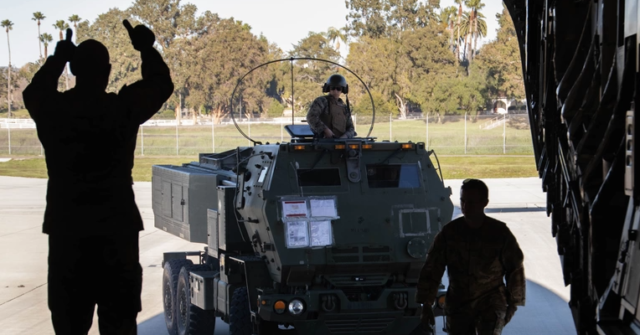In a significant escalation of the conflict between Russia and Ukraine, Russia has reported sustaining an attack on a military depot by ATACMS ballistic missiles reportedly supplied to Ukraine by the United States. This incident raises questions about a potential shift in U.S. policy, as it would suggest that American-made missiles are being used to strike targets deep within Russian territory. Both Kyiv and Moscow agree that an attack occurred, but there are stark differences in how the two nations characterize its effectiveness. While Ukrainian officials have not confirmed the type of weapon used, Russia claims to have evidence that points to the deployment of ATACMS, thereby amplifying tensions with the U.S.
The timing of this military strike is crucial, as it comes just days after reports emerged that the Biden administration had reconsidered its previous stance regarding long-range strikes by Ukraine against Russian targets. Moscow has vehemently warned that such actions would not only represent a dangerous escalation but could also be interpreted as a direct act of aggression by the U.S., potentially triggering new nuclear posturing from Russia. Indeed, this recent attack coincided with significant changes to Russia’s nuclear doctrine, where Kremlin officials suggested that strikes into Russian territory would be viewed as a proxy attack on the U.S., thus heightening the stakes of the ongoing war considerably.
According to reports from Ukrainian media, the target was identified as a military supply facility tied to the 1046th Logistics Centre located near Karachev in Bryansk Oblast, approximately 70 miles from the Ukrainian border and well within the operational range of ATACMS. Ukrainian military authorities reported a series of secondary explosions resulting from the strike, implying significant damage. An insider reportedly informed RBC-Ukraine that ATACMS missiles were indeed used, although Russian sources claimed that their air defense systems managed to intercept five out of six missiles. Russian officials stated there were no casualties but acknowledged that fragments of the missiles did impact the target, igniting fires.
The incident also coincided with a claimed attack involving Ukrainian drones in the same region, emphasizing the complexity of ongoing battles around Russia’s border. Since acquiring ATACMS missiles in 2023, Ukraine has conducted multiple successful strikes against Russian positions, albeit with restrictions from the U.S. meant to prevent escalation. These restrictions previously limited the use of such missiles to targets within Ukraine’s internationally recognized borders. However, prior successful strikes, such as a dramatic assault on the Russian Black Sea Fleet’s headquarters in Crimea, demonstrate Ukraine’s capability and willingness to hit high-value targets effectively.
In conjunction with the alleged missile attack, President Vladimir Putin announced updates to Russia’s nuclear doctrine, which now considers threats to its sovereignty as sufficient grounds for a potential nuclear response. This amended doctrine expands the scope of military threats that warrant nuclear deterrence and includes any conventional attack supported by foreign nuclear powers. As Western military planners analyze these developments, the rhetoric from Moscow suggests that even non-nuclear nations collaborating with nuclear states in conventional warfare could provoke a nuclear response from Russia, significantly altering the strategic calculus in Ukraine.
The evolving nature of the conflict, characterized by advanced weaponry and shifting military doctrines, signals a dangerous escalation that could have far-reaching consequences. As both sides continue their military operations with different narratives around effectiveness and intent, the potential for miscommunication and unintended escalation remains high. The implications of this Ukrainian strike, particularly in light of its perceived support by U.S. weaponry, underscore the precarious nature of modern warfare, where proxy conflicts can quickly spiral into larger confrontations between nuclear-armed powers, fundamentally altering international relations in the region and beyond.

